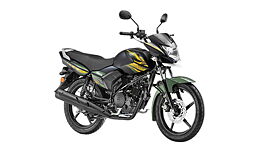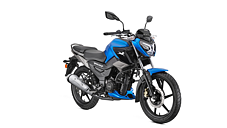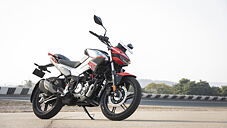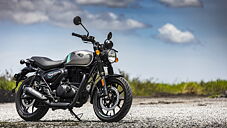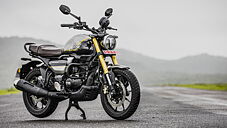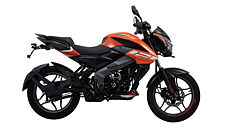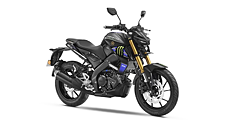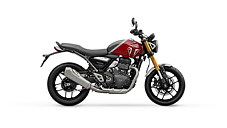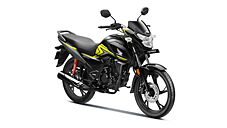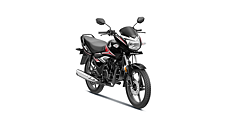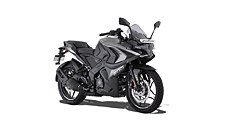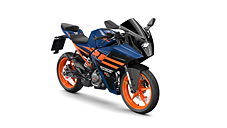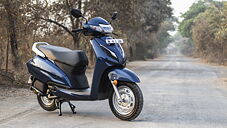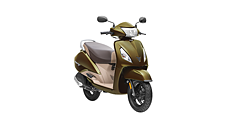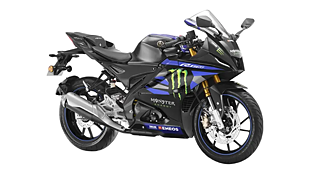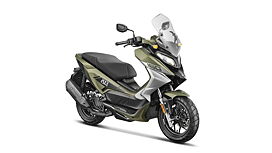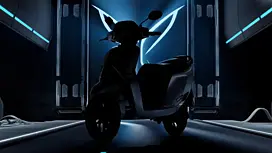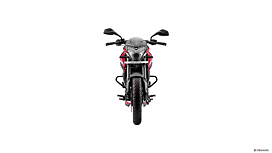Introduction

The Yamaha Saluto is a very perplexing motorcycle. Having established its roots in the more enthusiast-oriented 150cc segment with the FZ-S and the YZF-R15, Yamaha launched the Saluto as a replacement for the ageing SS125 with an eye on the lucrative 125cc commuter segment. On paper, it almost seems like Yamaha has taken a step backwards. The Saluto is more than 2 horsepower down on the motorcycle it replaces and loses out on a lot of features and flair thereby adopting a very civilised and sober design. So what was Yamaha actually thinking when they brought in the Saluto?
As it turns out, a majority of consumers of this segment are not fans of technological innovations, but crave that their bike has that extra flair to outshine the crowd of 100cc motorcycles. As a result, the segment continues to be full of skinny and drab looking machines. And in this context, the Yamaha Saluto seems to be just what the doctor ordered!
With ‘Mileage tujhe salaam’ as a tagline, it is pretty obvious what Yamaha is aiming for with the Saluto. Yamaha boasts of an efficiency of 78kmpl, making the Saluto one of the most fuel-efficient 125cc bikes in the country. But is this enough to take on other well established bikes like the Honda Shine and the Discover 125 M?

Looks and Styling

Quite unlike the rest of Yamaha’s range, the Saluto is a very simple and functional motorcycle. The styling is quite pleasant and the bike doesn’t have any kind of unnecessary ‘flair’. The overall design is proportionate and visually balanced, and nothing on the bike looks out of place or even spectacular, for that matter.
The front of the Saluto features a bikini fairing, which integrates the edgy headlamp unit and pentagonal pilot lamp. The fuel tank gets edgy fibre extensions on both sides which seem to be inspired by the ones in the SZ-S and the FZ-S. A thick black stripe runs down the centre of the Saluto from the visor right up to the tail, giving a two-tone look to the bike. The side profile also flaunts a black and silver two-tone design for the side cowls, which along with the blacked-out engine and the alloys wheels complement the ‘victory red’ paint scheme of the bike.
For once, Yamaha has adopted a clean design for a motorcycle instead of smothering it with loud and flashy stickers. The decals on the fuel tank are the only bit of stickering on the bike, which add a dash of flamboyance to the otherwise sober design.
In front of the rider sits a fully analogue instrument cluster wrapped within the headlamp cowl. The instrument cluster is pretty basic and displays only the speed, odometer and fuel level. Switchgear quality is pretty decent, and is only let down by the weird side indicator button, which lacks the ‘click’ sensation when you wish to cancel it. At 112 kilograms, the Saluto is the lightest motorcycle in the segment, this is especially useful in improving the bike’s usability and fuel efficiency.
Though the Saluto might essentially be a bare-bones cut-price motorcycle, Yamaha hasn’t taken the easy way when it comes to quality or fit and finish of the components. The Saluto might be a minimalist motorcycle per se, but every component on it highlights Yamaha’s attention to quality. One of the biggest grouses that I have with the Saluto is the lack of underseat storage, which means that you will have to look for an alternate place to keep the bike’s documents.

Engine and Gearbox

The single-cylinder Blue Core engine of the Saluto displaces 125cc, making a little over 8bhp and 10Nm of torque. The engine gets a more compact combustion chamber than the previous 125cc Yamaha models and comes mated to a four-speed transmission. Despite the lack of intimidating power figures, the engine’s throttle response is crisp and easy to modulate, and the bike feels very refined in the low and mid-ranges. However, as the revs increase, the engine starts to sounds brash and vibrations start to creep in through the footpegs, fuel tank as well as the flimsy headlamp cowl.
The Saluto takes an awful lot of time and gear changes to get to the cruising speed of 60kmph. The Saluto’s short gearing means that you run out of the first two gears pretty quickly, though the long third ratio ensures that you don’t have to keep switching gears very often in moving traffic. Overtaking from 40kmph requires you to be in the third gear, as the Saluto’s second ratio runs out of steam at around 55kmph. Once you twist the throttle, there is a lull for about half a second, after which the torque kicks in and the bike starts to pick up pace. In its fourth gear, the Saluto has a lot of vibrations around the 60kmph range, which is quite bizarre as commuter motorcycles are expected to be most refined in this band. Nevertheless, if you can turn a blind eye towards these vibrations, you can keep riding the Saluto on its limits all day long and it will keep delivering throughout, without any glitch. On uphill sections, the Saluto pulls very cleanly, though the lack of power raises its ugly head when you have a pillion .
The Saluto’s clutch is very light and progressive, though it is let down by the clunky gearbox which makes the bike quite unpleasant to use in stop and go traffic. Though I am accustomed to using a four-speed gearbox, even my ancient RX-135 has a one down three up pattern. The four down pattern for the gearbox has been an omnipresent feature among all budget commuter motorcycles for as long as I can remember, though it is high time that manufacturers start offering a one down three up gearbox to improve usability.
On the efficiency front, the Saluto returned an impressive 66.67kmpl over a combined cycle, which translates into an overall range of just over 500 kilometres. This number is astonishingly close to what 100cc and 110cc commuter motorcycles offer, and I am pretty sure that the Saluto would be even more efficient once it goes through its first service. However, this efficiency comes at the expense of performance, and the Saluto happens to be the least powerful motorcycle in the segment.

Ride and Handling

The Yamaha Saluto gets a typical commuter-ish forward set arrangement for the footpegs and raised handlebars, which make the riding position very comfortable. This tall handlebar and sharp geometry make the Saluto one hell of a handler and it equally works well while filtering through the city traffic as on a winding ghat section. The Saluto feels very predictable and is easy to tip into corners, though it does feel held back by the lack of power.
But the agility and the performance of the bikes in this segment are all secondary to the comfort they offer. In terms of comfort, the narrow seat of the Saluto feels uncomfortable when you ride it for an extended period of time. While I won’t go so far as calling it ‘plush’, the suspension does a good job of soaking up all the undulations on the roads. The bike feels very stable and planted, and there was no sign of twitchiness while riding it on bad roads or during heavy braking. The Saluto gets drum brakes on both ends, which surprisingly aren’t quite up to the mark. Though the drum brake setup might seem adequate considering the limitations of the Saluto’s performance, you have to use both the brakes simultaneously in proper measure when you need to rapidly shed some speed, especially in wet conditions.

Verdict

The Saluto is an adept commuter motorcycle with a fuel efficiency previously seen only in 100cc and 110cc motorcycles and sweet handling, thanks to its lively suspension setup. But somehow, I am doubtful whether this is enough to topple the current segment leader – the Honda Shine. At Rs 67,600 (on-road, Mumbai), the Saluto is marginally more expensive than a similarly specced Honda Shine. The Shine is not only the best-selling 125cc motorcycle in India, but also the Japanese manufacturer’s top selling two-wheeler among its worldwide operations, which in itself says something about the bike’s popularity.
However, just the popularity of the Shine is not enough to straight away shut the door on the Saluto. As an overall package, the Saluto seems perfect for someone who needs a slick-looking 125cc motorcycle, with the efficiency of a 100cc commuter. Along with a lucrative price tag, good looks and the best-in-class efficiency, the Saluto also gets the bonus of exclusivity, which is something that an owner of a Shine might sorely miss. Though the engine could definitely do with some more refinement, Yamaha has certainly done a fine job of giving the target audience what it needs. And that, pretty much clears up all the confusion.

Gallery
1/22
Double Tap to Zoom











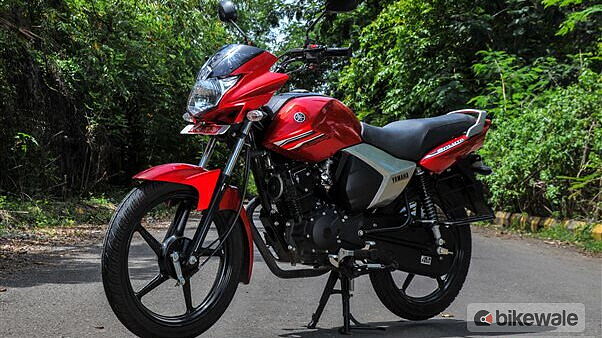







![[object Object] ThumbNail Images [object Object] ThumbNail Images](https://imgd.aeplcdn.com/642x361/bikewaleimg/ec/19445/img/l/Yamaha-Saluto-Gear-Levers-54401.jpg?v=201711021421&q=80)
![[object Object] ThumbNail Images [object Object] ThumbNail Images](https://imgd.aeplcdn.com/642x361/bikewaleimg/ec/19445/img/l/Yamaha-Saluto-54402.jpg?v=201711021421&q=80)
![[object Object] ThumbNail Images [object Object] ThumbNail Images](https://imgd.aeplcdn.com/642x361/bikewaleimg/ec/19445/img/l/Yamaha-Saluto-Headlamp-54403.jpg?v=201711021421&q=80)
![[object Object] ThumbNail Images [object Object] ThumbNail Images](https://imgd.aeplcdn.com/642x361/bikewaleimg/ec/19445/img/l/Yamaha-Saluto-Side-Panel-54404.jpg?v=201711021421&q=80)
![[object Object] ThumbNail Images [object Object] ThumbNail Images](https://imgd.aeplcdn.com/642x361/bikewaleimg/ec/19445/img/l/Yamaha-Saluto-Tank-54405.jpg?v=201711021421&q=80)
